Main Menu

Gasmaske (Gas Masks) und
Bereitschaftsbüchsen (Gas Mask Canisters)
M.1915 Gummimaske
Gas masks became standard issue to German troops from August 1915 through the end of the war. There were different patterns, the early first pattern was made of rubberized canvas and was called the Gummimaske. There were several patterns of Gummismasken as the Germans learned lessons through use and experience, as well as adapting to material shortages.
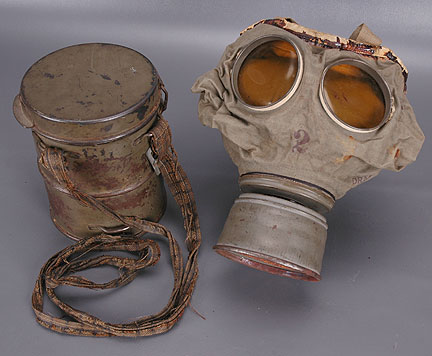
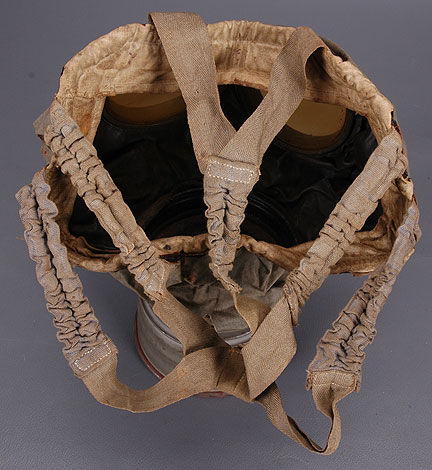
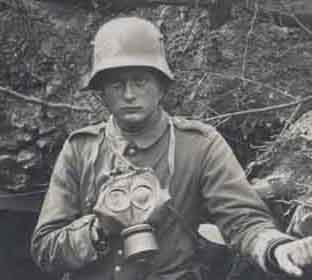
Left to right: Original Gummimaske and Bereitschaftsbüchsen (Gas Mask Canisters), rear view of an original Gummimaske and an original photo of a soldier with Gummimaske
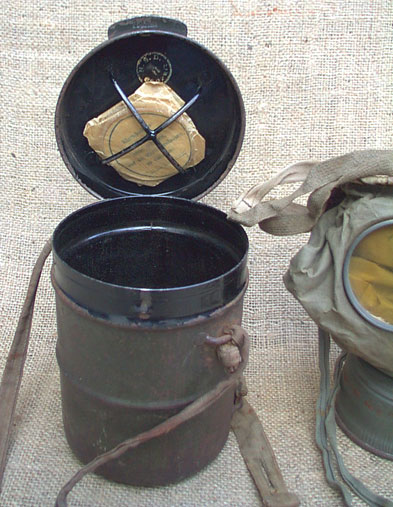
The Bereitschaftsbüchsen (Readiness can or carry can) for the Gummimaske was a short, circular sheet iron can with a press-fit lid. There were wire loops tack-welded to the exterior of the can for the attachment of a fabric shoulder strap. In the bottom of the can was an instruction card on how to use the mask. The Germans did not include exhalation valve in their masks, so condensation was a big problem. Early masks included extra material in the sides of the mask so the soldier could push a finger in and wipe the inside of the lenses, but this increased the air volume in the mask which increased the difficulty of the soldier exhaling air out of the mask through the filter, so the Germans developed a cellulose filter that was placed inside the mask against the mask's lens that inhibited the development of moisture build-up, but these had a limited lifespan. Therefore the soldier carried multiple sets of these "Klarscheiben" and these were stored in a wire "cage" in the lid of the Bereitschaftsbüchsen.
M.1917 Lederschutzemaske
The Germans realized that the rubber fabrics ended up having a permeability to certain gases, so later, as the war took its toll on the supply of imported materials, Germany developed and manufactured the Lederschutzmaske (which today is the type most commonly found by collectors). Made of chrome-tanned sheepskin, the Ledeschutzmaske was superior to protecting against the various gases being used — unfortunately it was inferior to the Gummimaske in terms of fit - the Ledeschutzmaske was hard to fit properly to the face. This was especially true if the man had a beard.
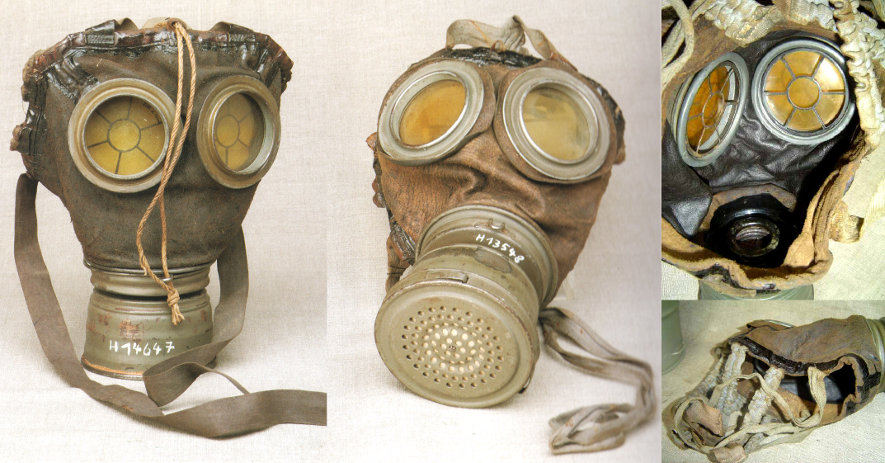
Original M.1917 Lederschutzemaske
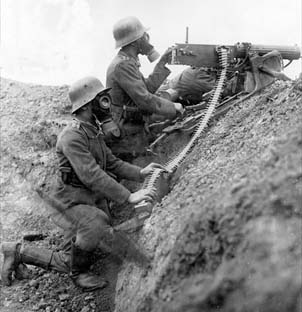
Original photo showing two machinegunners wearing Lederschutzemasken.
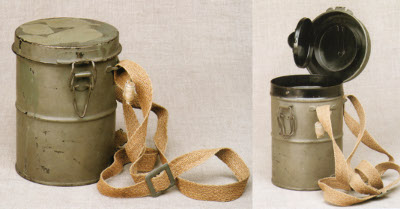
The Bereitschaftsbüchsen of the Lederschutzemasken was
slightly taller that that of the Gummimaske, and the lid now closed with a wire bail draw-latch. The use of the
Klarscheiben continued, and the spares were now contained in a small lidded compartment
in the can's lid. Carry straps were still made from fabric, but later in the war straps were also made from papercloth.
Stofftasche für Atemeinsatz
(Gas Mask Spare Filter Carrier - [Optional])
Later in the war, enlisted men carried an extra gas mask filter cartridge in a cloth bag that hung from the equipment belt. The bag was designed to carry the filter cartridge, either by itself or in its original issue shipping can. The can was lacquered, lined with cardboard, and sealed with adhesive tape. The filter itself was factory sealed to keep out dirt and moisture, a tin screw top on the gas mask end and a brown paper cover with a metal pull tab on the other.
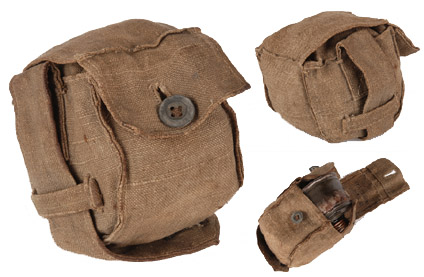
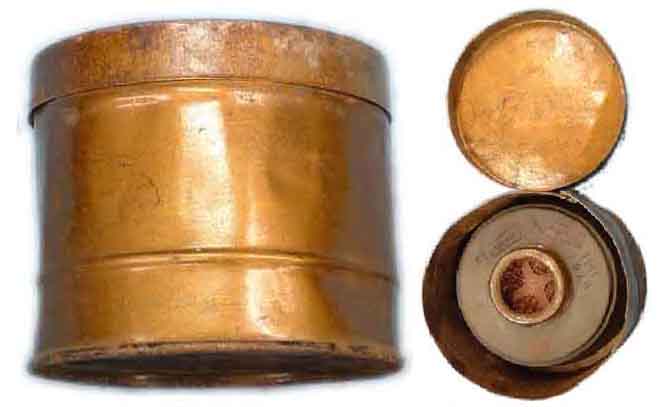
Above left: Original filter carrier Above right: Original lacquered shipping can with filter